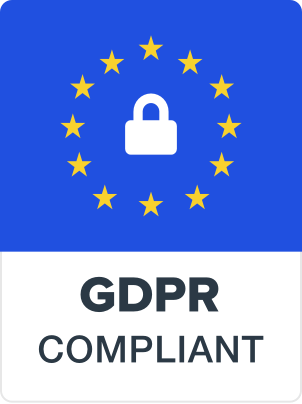10 Ingenious Ways You Can Do Audit Planning

June 8 , 2023
Numerous auditors find auditing challenging as the attempt requires careful examination and thorough preparation. Multiple incompetent auditors spend valuable time planning, preparing, and collecting evidence because they need to figure out what they’re doing.
Today, it is much more difficult for auditors to collect credible evidence, such as petty cash vouchers. There will be a mountain of paperwork, a significant burden for modern auditors. Technological progress has simplified auditing, which is highly appreciated.
Now, auditors can download a site audit application to their mobile devices and complete what previously took weeks or months in mere minutes. One of the many benefits of using digital applications is saving time, money, and resources. Reduces the likelihood of making an error and eliminates excessive official difficulties.
So here, this blog from UrAudits, the top audit planning site and data analytics app, will take you to the top eleven creative approaches to audit planning.
1. Specify The Objectives And Limitations Of The Audit
You can begin your audit planning procedure with establishing the audit’s parameters. Before commencing an audit, your team can determines and reviews the client’s activities, internal controls, and previous audits. You can collaborate with the client to establish clear auditing objectives, ensuring the audit produces the intended results.
A broad understanding of the audit’s scope is necessary to determine which aspects of the client’s activities call for an inspection. Your team investigates every facet of the client’s enterprise to identify potentially vulnerable points that could lead to catastrophic failure.
By limiting the scope of the audit, you can focus on the parts of the company that need the most help. The audit scope helps us determine how many individuals and how much time will be necessary to complete the task successfully.
2. Determine The Hazards

The next step in audit preparation is determining the audit’s riskiness. You can use a comprehensive risk assessment methodology to identify your company’s most susceptible areas to fraud, errors, and other threats. To make the audit as effective as possible, it’s essential to prioritise identifying the sites with the highest risk.
Before the audit planning process is complete, a risk assessment is vital. This allows you to focus on the client’s most pressing business requirements and give them the attention they deserve. You can produce a framework to evaluate the possibility and severity of conceivable threats. Based on this information, you can design a risk-based digital audit strategy that is risk-based and custom-made to the client’s needs.
3. Determine The Methods Of Auditing
After figuring out what the risks are, the audit processes are made. Your team should evaluate the client’s policies, procedures, and controls to guarantee that the audit methods are appropriate for the client’s needs and risks. To ensure the audit’s success, you can integrate digital auditing methods via an app or software by approaching a full audit and inspection service provider like UrAudits, which offers cutting-edge automation tools.
The audit procedures describe the steps the audit team will take to accomplish the audit’s stated objectives. You can use interviews, observations, and document reviews, among other auditing techniques, to acquire information and identify problems. Combining manual and computerised auditing methods makes it possible to conduct a thorough audit that leaves little room for human error.
Download our site audit app and gain an extensive report on the stability of your audit risk management. Our audit app scans your risk and identifies any issues that could affect its performance, including loss prevention and reduction, control risk, detection of misstatements and errors etc. Carry action directly to enhance your risk audit performance and user experience.
4. Dividing Up Assets
As you know, resource allocation is one of the most crucial aspects of audit planning. You can allocate personnel based on audit objectives, priorities, and prospective risks. Using UrAudits app-based system, you can easily monitor the audit team’s efficient use of time and resources.
Appropriate resource allocation is essential for a productive and successful audit. You can allocate personnel based on audit objectives, priorities, and prospective risks. When allocating resources, consider the client’s known needs and individual circumstances. The app-based nature of the UrAudits system makes it easy for us to track usage and adjust our strategies accordingly.
5. Establish A Schedule For The Audit
The audit schedule is established by determining the audit’s start and conclusion dates, audit location, and audit team’s availability. You can collaborate closely with the client to ensure that the audit schedule matches the client’s operations. With the UrAudits app, you can plan audit activities and monitor audit team performance to ensure audits are completed on time.
An effective audit that does not slow down the client’s business operations requires careful audit schedule planning. Your team can collaborate with the client to determine the most opportune time to conduct the audit, considering the customer’s peak business periods and any other restrictions. Our app-based method for planning and monitoring the audit team’s activities will ensure that the audit is completed on schedule.
UrAudits takes advantage of novel approaches to audit planning to provide unparalleled auditing services to our customers. Contact us immediately to set up an audit planning meeting and get moving toward accomplishing your audit goals.
6. Consider Previous Audit Reports

You should always examine prior audit reports to learn from them when planning an audit. You can review the client’s previous audit reports for indications of problems or locations requiring more attention. This preparatory work enables you to effectively address each audit customer’s needs and potential hazards.
Reviewing past audit reports lets you determine if any of the client’s processes have previously needed improvement. You can also utilise it to recognise frequent problems and specify how to solve them. Reading audit results from the past significantly improves your capacity to accommodate the client’s specific requirements and risks.
7. Plan The Audit And Distribute It
You can communicate the audit strategy to the client once it is written. The audit’s scope, objectives, processes, and timeline are outlined here. You can ensure the client knows what to expect during the auditing procedure.
The audit’s success relies on immediate and constant contact between all involved parties. To ensure that the client knows what to expect during the audit and how they can assist, you can share the audit strategy with them. This facilitates a minimally disruptive audit of the client’s business operations.
8. Determine Locations Where Fraud Could Occur

Fraudulent actions can cause harm to a business’s bottom line, reputation, and credibility. As part of the audit preparation process, your team can identify potential areas of fraud to ensure the company’s internal control systems are designed to prevent, detect, and respond to fraud.
You can use data analytics, interviews with key personnel, and a review of financial records and transactions, among other methods, to detect possible fraud. During the audit planning phase, identify the potential areas of fraud and then design the audit processes to address those risks.
9. Determine The Extent Of Importance
In auditing, “materiality” refers to the significance of an error or omission in the financial statements. During the audit planning process, your team can set the materiality level, which refers to the number of misstatements that could impact users’ decision-making process.
You can determine the materiality level by several factors, including the scale and type of the company, the regulatory climate, and the users’ expectations. Once you choose the materiality threshold, you can develop the proper audit methods for both the risk and the materiality level.
10. Consider The Function Of Technology

Modern computing has profoundly impacted the auditing industry; at UrAudits, we enthusiastically service computerised auditing techniques. You can enrich your audit procedures using data analytics, ML and AI, among other tools.
You can use data analytics to analyse massive datasets quickly and precisely UrAudits offers a data analytics app. As a result, you can detect anomalous behaviour and potential fraud centres more rapidly than with conventional auditing methods. You can use AI and ML via the UrAudits app to automate mundane tasks to free up our audit team’s time to concentrate on more complex audit procedures.
Conclusion
The auditing procedure significantly depends on meticulous planning. The audit plan is communicated after the audit scope and objectives have been determined, risks have been assessed, audit processes have been identified, resources have been assigned, an audit schedule has been developed, and prior audit reports have been reviewed.
UrAudits uses a site audit app approach to auditing to provide clients with the highest quality service. By utilising novel approaches to audit planning, our team can ensure that our client’s requirements will be met and their risks will be effectively brought about.
Copyright © 2024 Uraudits.com. All Rights Reserved. Privacy Policy | Legal | Terms of Use
Privacy Overview
| Cookie | Duration | Description |
|---|---|---|
| cookielawinfo-checbox-analytics | 11 months | This cookie is set by GDPR Cookie Consent plugin. The cookie is used to store the user consent for the cookies in the category "Analytics". |
| cookielawinfo-checbox-functional | 11 months | The cookie is set by GDPR cookie consent to record the user consent for the cookies in the category "Functional". |
| cookielawinfo-checbox-others | 11 months | This cookie is set by GDPR Cookie Consent plugin. The cookie is used to store the user consent for the cookies in the category "Other. |
| cookielawinfo-checkbox-necessary | 11 months | This cookie is set by GDPR Cookie Consent plugin. The cookies is used to store the user consent for the cookies in the category "Necessary". |
| cookielawinfo-checkbox-performance | 11 months | This cookie is set by GDPR Cookie Consent plugin. The cookie is used to store the user consent for the cookies in the category "Performance". |
| viewed_cookie_policy | 11 months | The cookie is set by the GDPR Cookie Consent plugin and is used to store whether or not user has consented to the use of cookies. It does not store any personal data. |









